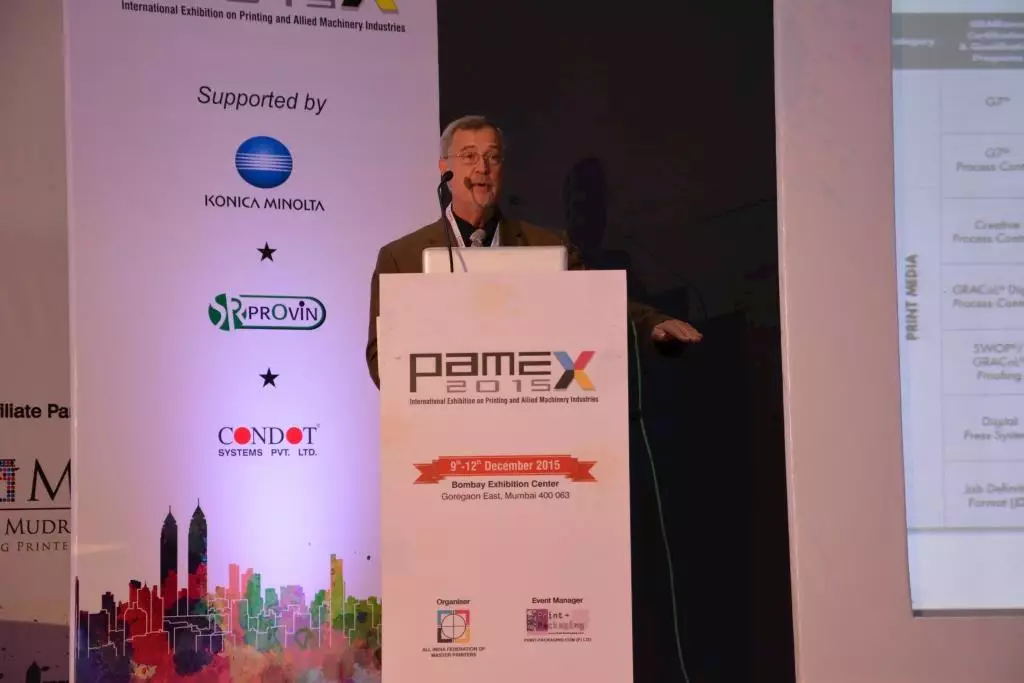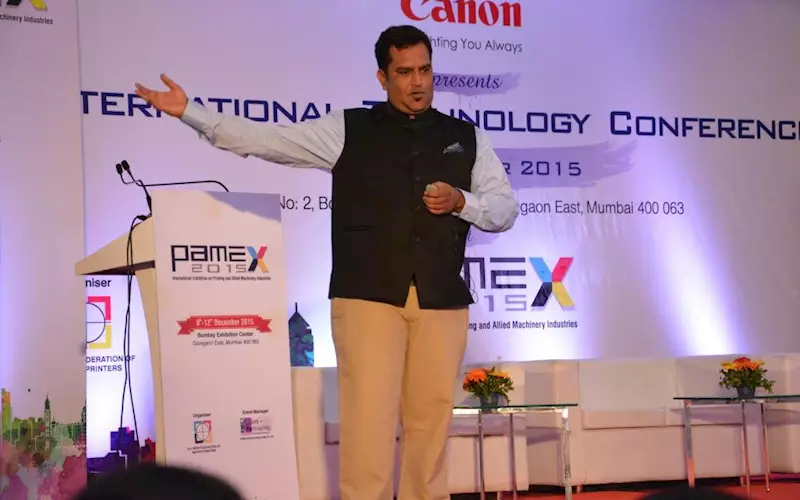The International Technology Conference, organised by Mumbai Mudrak Sangh on 10 December, in concurrence with the four-day Pamex, was in all sense a platform for the manufacturers to bring to the fore the need for the printers to adopt technology to their benefit.
And what better way to put this point across than brand case-studies from across the globe. A Appadurai, country manager – Indigo and inkjet Solutions, HP, had in his kitty the various campaigns that were executed on the Indigo and in return upped the sales of the said brand.
One among them was the well known Coca-Cola’s Extraordinary Diet Coke Collection, the second unique campaign rolled out by the giant, after the success of Share a Coke campaign.
Durai said, “Digital has grown from being a chillar business to a profitable model when it comes to enhancing a brand’s value. The many gimmicks that one can do with digital printing is a gain for all, the printer, the brand and the end user. And all this while being able to be fulfill the technical requirements of brand colour and consistency.”
The other examples included L’Oreal’s children shampoo, personalised messages on Durex condom boxes (China), and dual label printing on the Chivas Regal bottle among others. “The one mindset that the printers need to change about the digital technology is that of paying FSMA. The FSMA in place has more positives than negatives. For one, the FSMA gives an assured cost of production to the printer, instead of the cost structure varying basis the price of plates and inks and so on. Indian printers need to start adopting the digital technology to their benefit and offer services to their clients rather than mere print jobs.”

While Steve Smiley, chairman of Print Properties, US, emphasised on adopting and adhering to standards for colour management. The highlight of his presentation was the six steps of standardisation that one can follow to achieve colour consistency. To begin with, arrange for standardised viewing conditions, take assessments for colour vision, follow a common language for communication, calibrate the inspection instruments and monitors, define the tolerance values and introduce process controls. Additionally, he pointed the PDFX file format for blind transfers.

Harveer Sahni, of Weldon Celloplast closed the first session with a brief history of the multiple printing technologies being adopted for in-line converting.
In the second technology session, Vinay Kaushal of Provin Technos played the devil’s advocate for LED UV technology. HE said, “In the European countries, the use of UV lamps with mercury is banned. Hence, LED UV is the only possible technology solution for future. LED UV is a green technology.”
Highlighting the advantages of LED UV, Kaushal added, “LED UV has a long life span when compared to mercury-based lamps. It reduces the consumption of power by 90% and does not emit harmful gases. Currently LED UV has 10 installations and post Drupa the number is expected to increase.” He said that it is a myth that LED UV inks are expensive. “The cost of these inks are comparable to the conventional inks.”
Following Kaushal, Jigish Chiniwala of Condot Systems spoke about value proposition based serialisation solution.
And finally, Ashutosh Tripathi, team leader at National Centre for Flexible Electronics, IIT Kanpur, delved into the topic of printed electronics. Tripathi said, “Printed electronics is the future. The advantages are many, including like low production cost, easy to pattern and increased speed. It provides flexibility in terms of size and shape, thanks to the flexible substrate used here. The electronic market in 2027 is guesstimated to be USD 330 billion, a reason why one should not miss the opportunity that the technology provides.”
In addition to the available technology with printed electronics like printed inks, oled lights, etc., in future the potential will move on in segments like books, display screen, smart cards, etc.
 While Steve Smiley, chairman of Print Properties, US, emphasised on adopting and adhering to standards for colour management. The highlight of his presentation was the six steps of standardisation that one can follow to achieve colour consistency. To begin with, arrange for standardised viewing conditions, take assessments for colour vision, follow a common language for communication, calibrate the inspection instruments and monitors, define the tolerance values and introduce process controls. Additionally, he pointed the PDFX file format for blind transfers.
While Steve Smiley, chairman of Print Properties, US, emphasised on adopting and adhering to standards for colour management. The highlight of his presentation was the six steps of standardisation that one can follow to achieve colour consistency. To begin with, arrange for standardised viewing conditions, take assessments for colour vision, follow a common language for communication, calibrate the inspection instruments and monitors, define the tolerance values and introduce process controls. Additionally, he pointed the PDFX file format for blind transfers. Harveer Sahni, of Weldon Celloplast closed the first session with a brief history of the multiple printing technologies being adopted for in-line converting.
Harveer Sahni, of Weldon Celloplast closed the first session with a brief history of the multiple printing technologies being adopted for in-line converting. 










 See All
See All